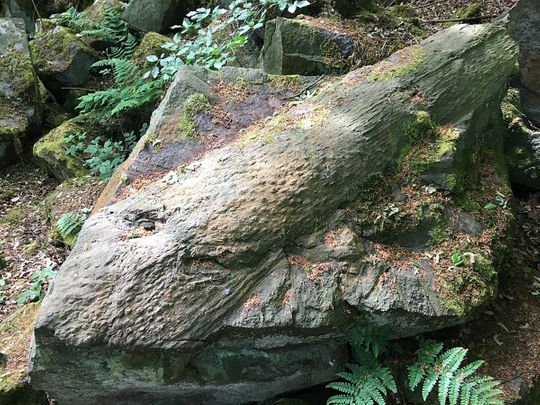
When we think of extinction events, we usually think of birds or animals. But whole species of plants have also vanished off the face of the Earth – some because of reasons beyond our control, and others, as a direct result of habitat destruction.
Click start to play today’s Spell It and grow a ‘plant’ from the letters provided.
Here are five plant species that no longer exist, but are still incredibly interesting, in terms of historical implications or what they revealed about the world they inhabited.
1. Glossopteris
The ill-fated Terra Nova expedition of 1910, led by British Royal Navy officer Robert Falcon Scott, came to an abrupt end when he and his team died soon after reaching the South Pole. However, when their bodies were recovered, researchers found that Scott’s party was responsible for the first-ever discovery of Antarctic fossils. The 270 million-year-old fossils were found to be from the glossopteris tree, and proved that Antarctica was once attached to the other continents, and flourished with plant life. It added indisputable evidence to the theory of plate tectonics. Although glossopteris have died out, their descendants include conifers and cycads.
2. Franklinia alatamaha
Named after one of the founding fathers of the US, Benjamin Franklin, this plant survived him by only 13 years. It was last seen in the wild in 1803. No one knows why the plant became extinct. Today, a few, rare cultivated specimens exist – and only because the tree was fortunate enough to produce flowers that pleased the human eye.
3. Sigillaria
Like something out of a Dr. Seuss book, the sigillaria was a spore-bearing, tree-like plant that flourished in the late Carboniferous period. It was tall, growing up to 30m, often forked and bore spores from cone-like structures that hung on its stems. The trees were green, right from the canopy to the trunk. Although they became extinct around 300 million years ago, their fossils can be found all over the world, from the US to China and Zimbabwe. Today, it’s most closely links to the lycopsids family, and club moss. So, if you’re imagining sigillaria to be a tree-sized moss, you’re not too far from the truth.
4. Lepidodendron
With the nickname ‘scale tree’, because of its fossilised trunk looking peculiarly like the scales of a reptile, the lepidodendron was another plant species that was closely related to club moss rather than any tree. They grew over 30m tall, just like the sigillaria, and their trunks were sometimes more than one metre in diameter. The diamond shape of the leaf scars on their trunks resembled alligator skin – so much so that in the 19th century, the petrified trunks were often displayed by amateurs at fairs, as the fossilised remains of giant reptiles.
5. Araucaria mirabilis
A species of coniferous trees from Patagonia, Argentina, these trees were once over 100 metres tall, and were the dominant species in a forest that was buried by a volcanic eruption some 160 million years ago. The trees were covered by volcanic ash just as their pinecones fully matured. Today, many of these pinecones have been collected by locals as keepsakes.
What do you think of these extinct trees and plants? Play today’s Spell It and tell us at games@gulfnews.com.



